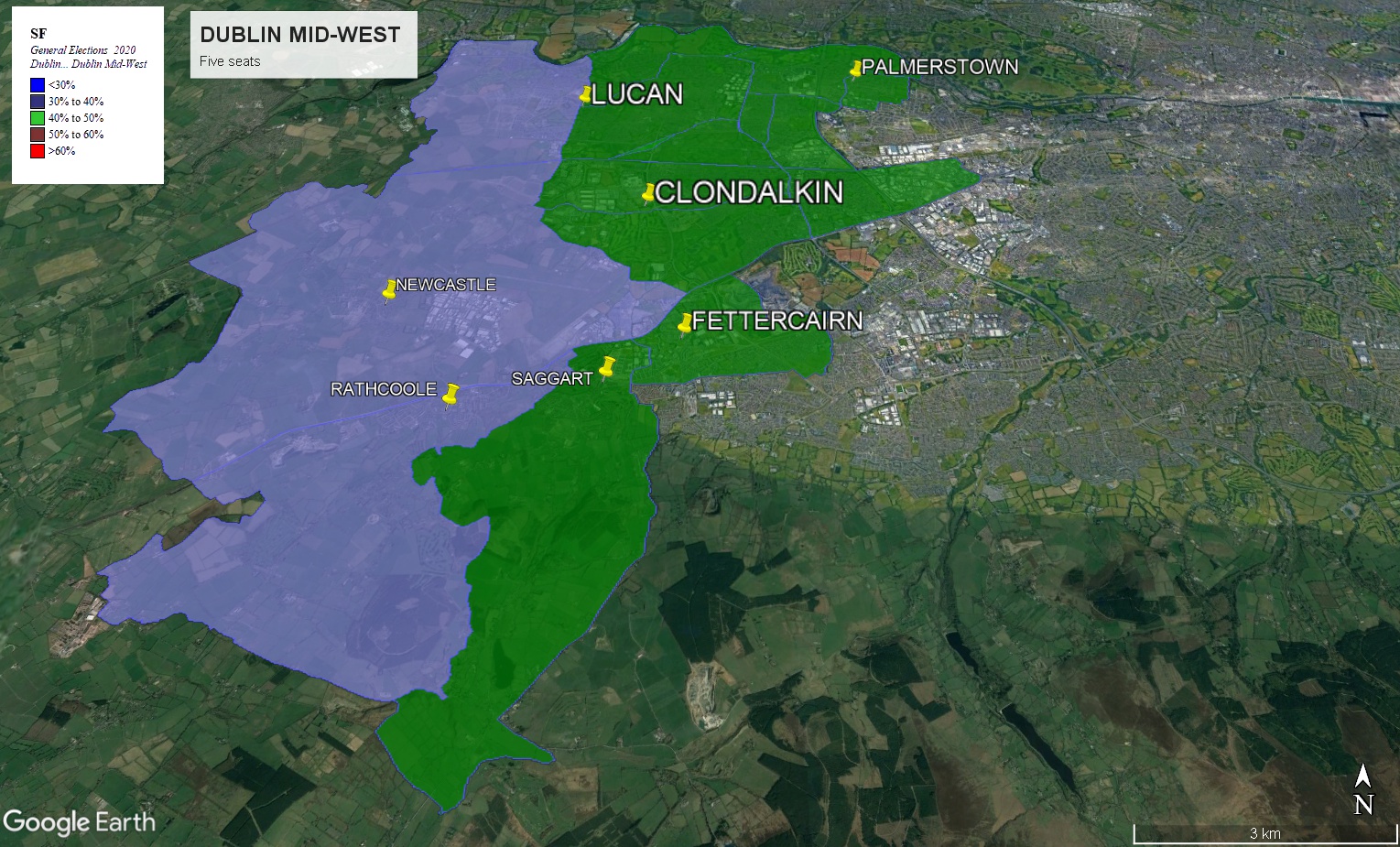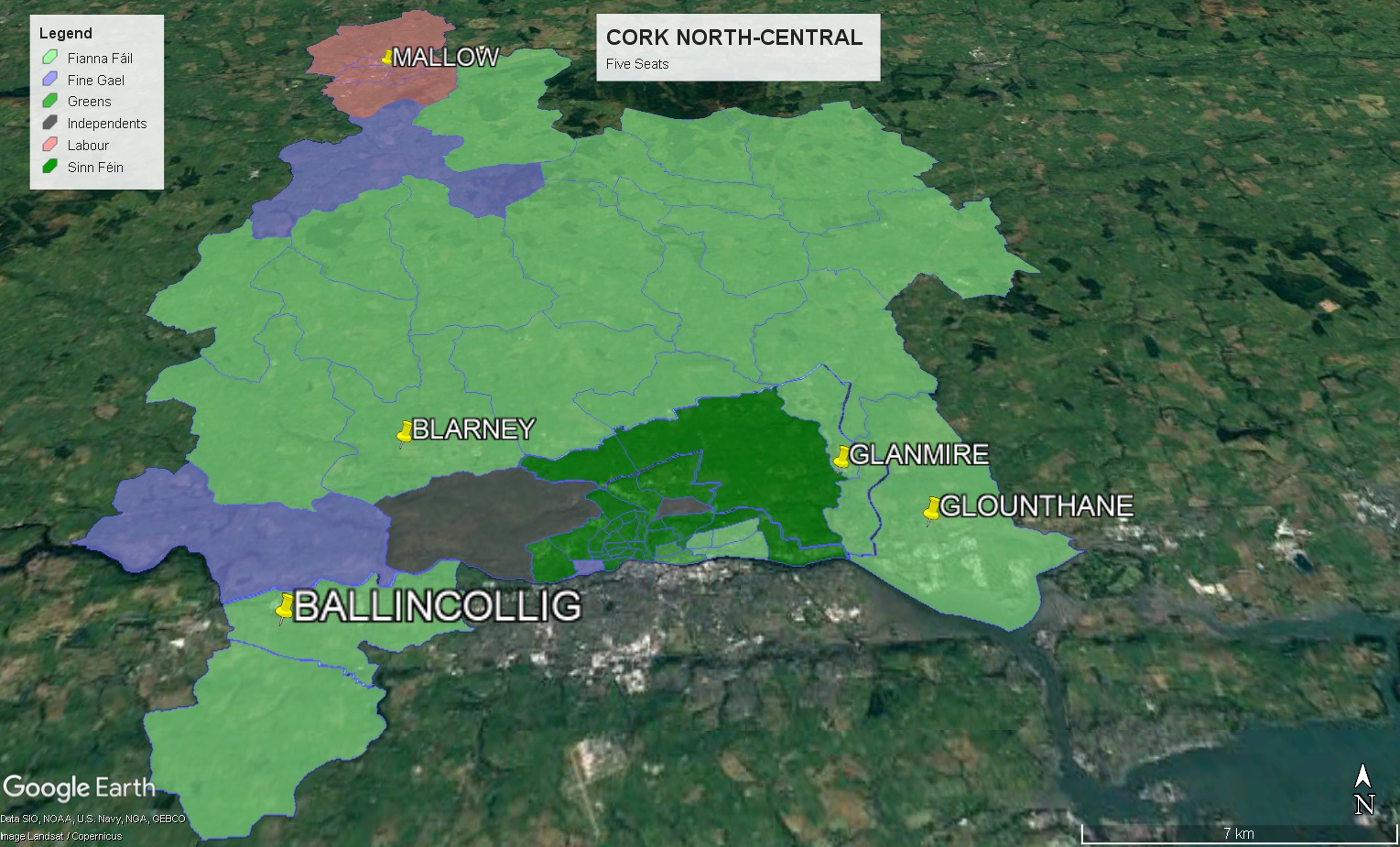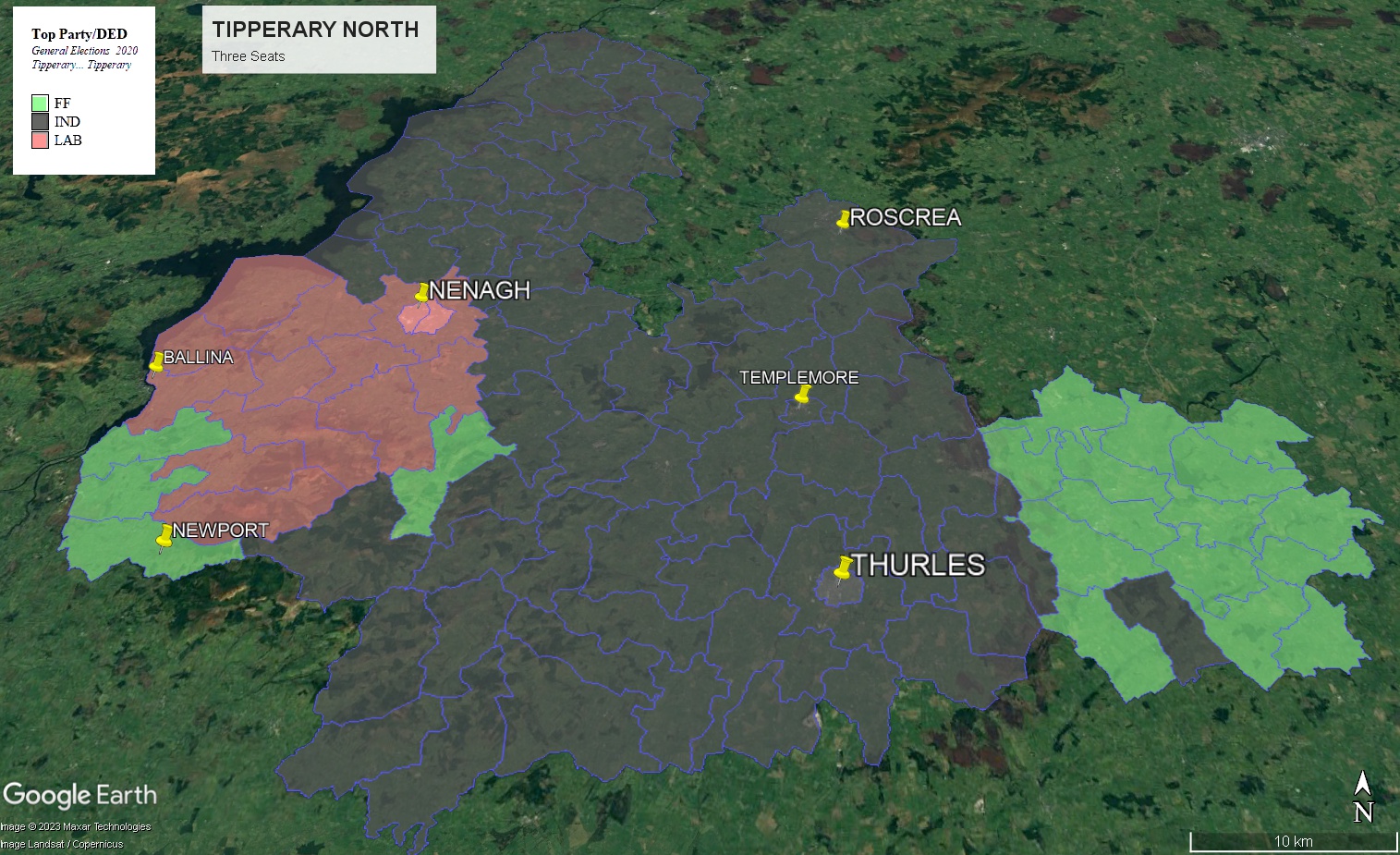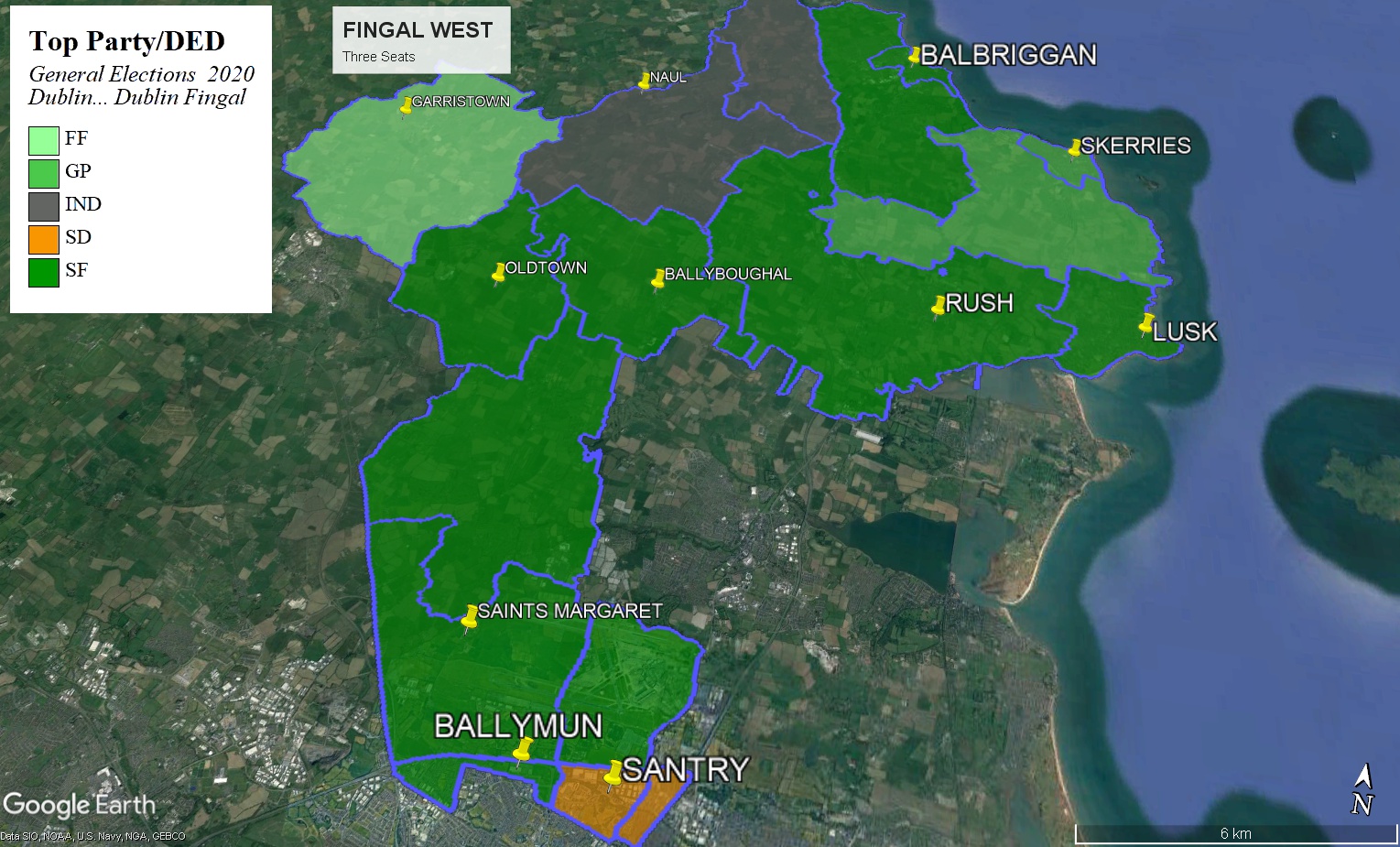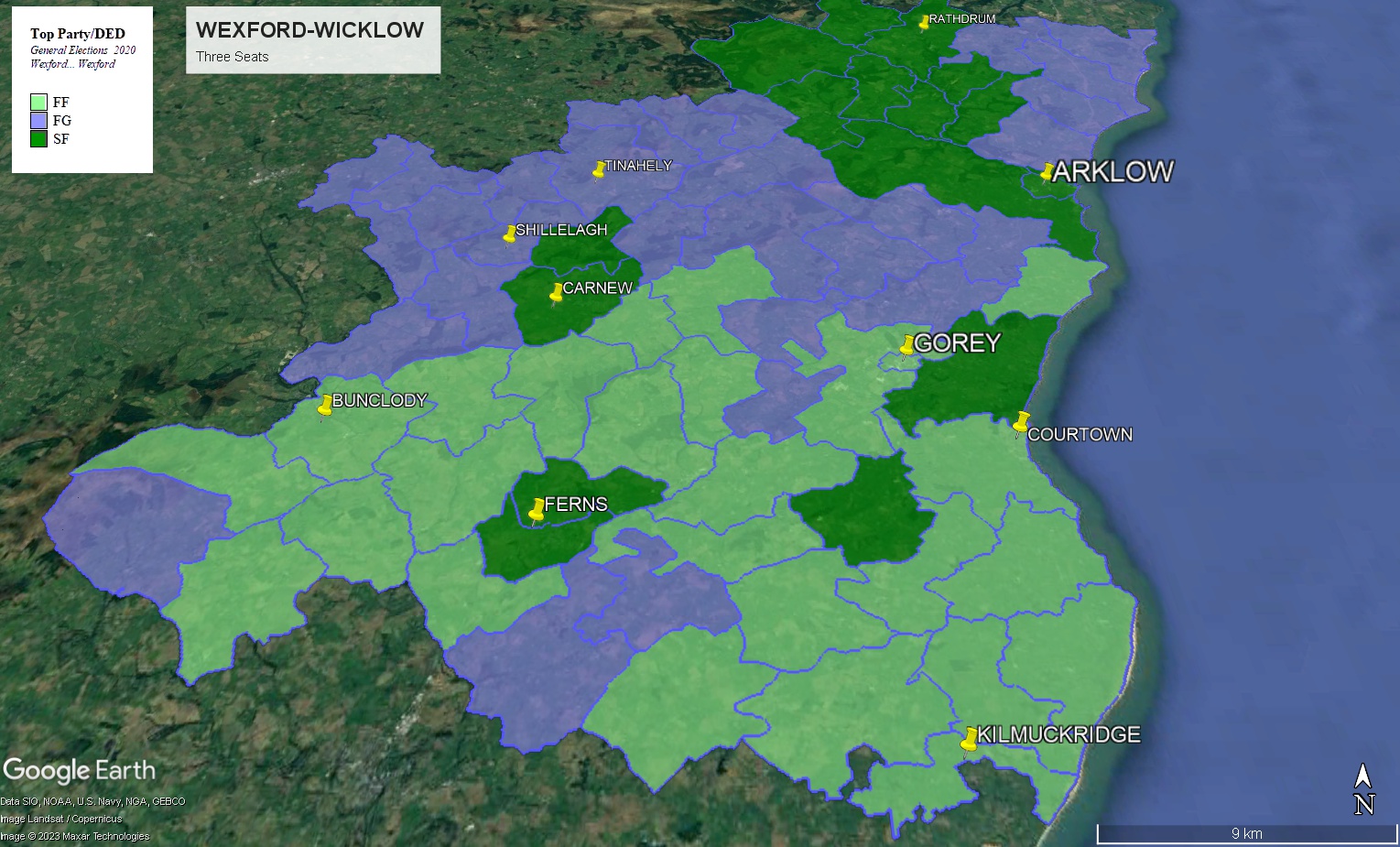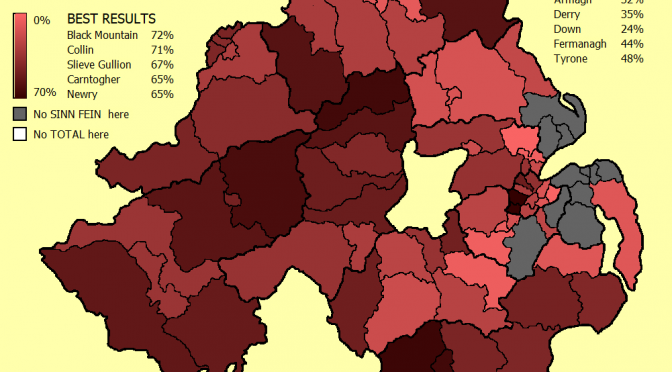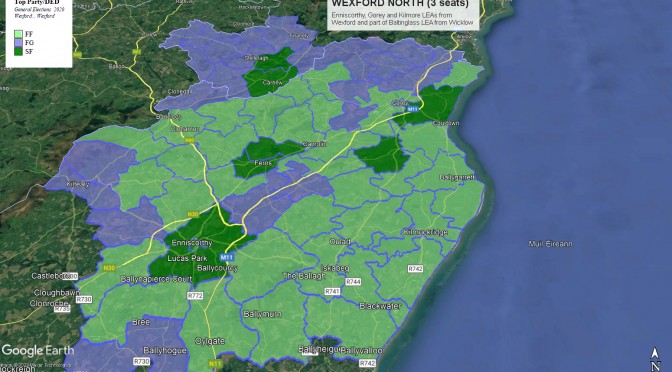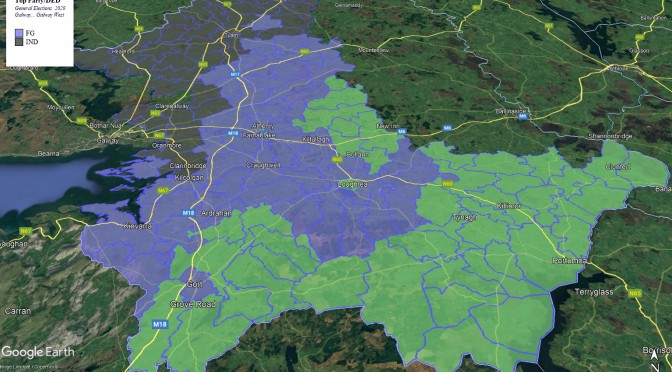In this post I will be posting election maps related to the Northern Irish Local Elections which took place on the 18th May.
Each of the maps are based on results at District Electoral Area (DEA)
The first tranche of maps relate to the overall vote-share of the parties – I will be adding more maps later and also more analysis.
OVERALL VOTE MAPS
Below are the vote performances by percentage for the five main Northern Irish parties – Sinn Féin, the DUP, Alliance, the UUP and the SDLP.
I plan to add the smaller parties later.
SINN FÉIN
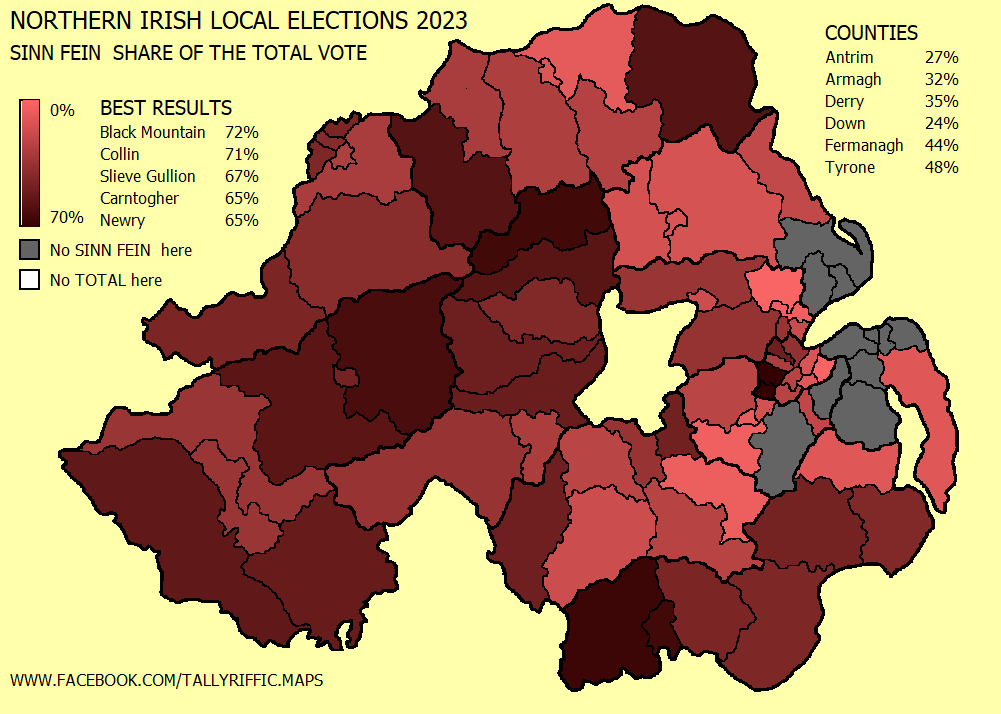
Not surprisingly, Sinn Féin polled best in their traditional heartlands – South Armagh, West Belfast, Tyrone and Fermanagh – but what was also notable was the strength of their vote in other areas.
DUP

The DUP as you might expect polled best in majority Protestant in rural and working-class areas of Belfast, Antrim, Armagh and Down.
ALLIANCE
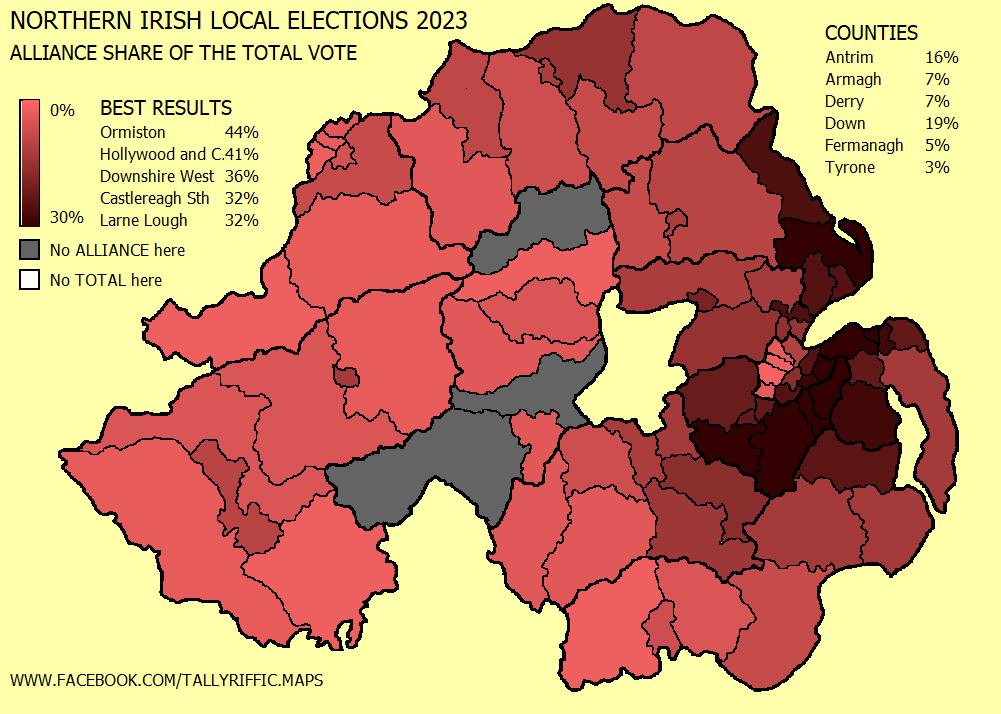
Alliance are sometimes pejoratively described as a Leafy-Suburbs-By-The-Sea party and to be honest this map doesn’t exactly challenge that narrative.
They have had some success west of the Bann in recent years, and indeed won a seat in Enniskillen for the first time ever two weeks ago, but at the same time they lost both their seats on Derry and Strabane Council
UUP
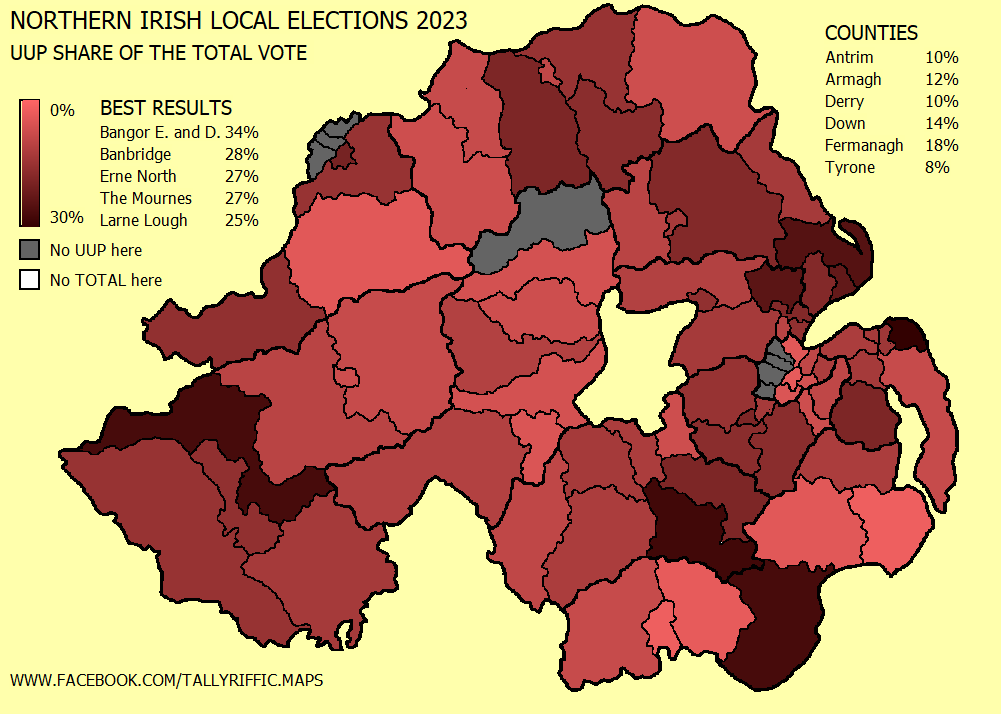
The UUP lost a further21 seats in the elections, but remainly strong in geographically disjointed areas – Banbridge, Larne, North Fermanagh etc. Interestingly they didn’t run a candidate in Court DEA in Belfast (which contains the Shankill Road) nor in neighbouring Oldpark.
By contrast, they still were able to outpoll the DUP in Fermanagh.
SDLP
Somewhat similar to the UUP, the SDLP retains a certain strength in geographically disjointed areas – Derry City, Downpatrick, Armagh City, South Belfast.
But even on the west bank of the Foyle in Derry, Sinn Féin took 6 seats to their 5 (in the old Derry City Council the corresponding results thirty years ago in 1993 was 12 for the SDLP and 3 for Sinn Féin) and in Downpatrick where they once took 65% and 6 of the 7 seats (again in 1993), this time they took 32% of the vote to Sinn Féin’s 43% (up from 4% in 1993).
They were also blessed that Sinn Féin under-nominated candidates in at least seven areas which led to the SDLP keeping seats in areas which otherwise would have gone to an extra Sinn Féin candidate.
